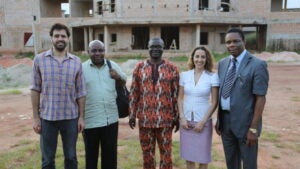
By Simar Bajaj and Abdullahi Tsanni
Even experienced doctors could be fooled by this disease.
A deadly hemorrhagic illness, it often looks like yellow fever, malaria, or typhoid. At first, an infected individual might feel weak, uneasy, and feverish; after a few days, headaches, sore throats, and nausea could begin. But in about 20% of infected individuals, patients start to feel like they’re suffocating as fluid leaks into their lungs; as the infection advances, they start bleeding out of their gums, eyes, and nose.




